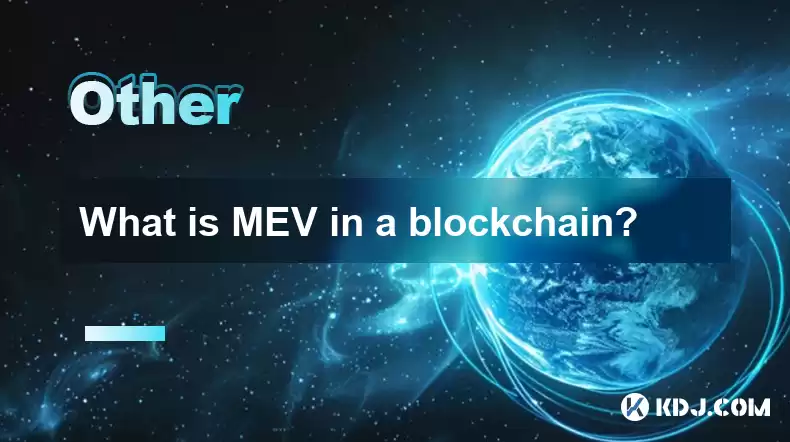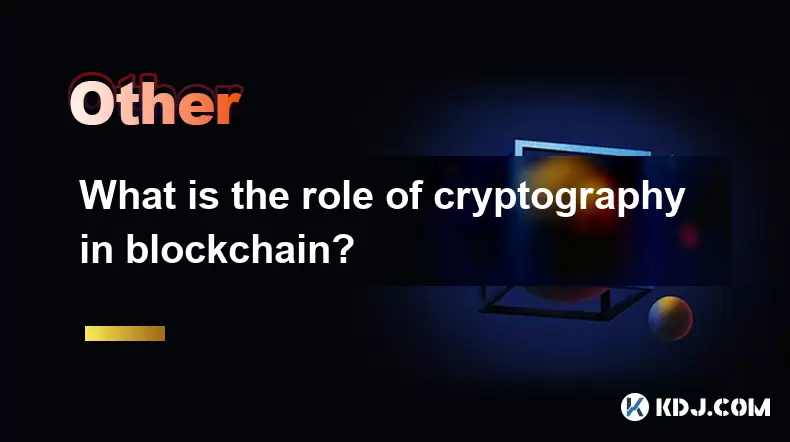-
 Bitcoin
Bitcoin $113900
0.47% -
 Ethereum
Ethereum $3491
-0.42% -
 XRP
XRP $2.876
-1.87% -
 Tether USDt
Tether USDt $1.000
0.03% -
 BNB
BNB $750.4
-0.49% -
 Solana
Solana $161.3
-1.76% -
 USDC
USDC $0.9999
0.01% -
 TRON
TRON $0.3242
-0.91% -
 Dogecoin
Dogecoin $0.1985
-0.19% -
 Cardano
Cardano $0.7241
1.49% -
 Hyperliquid
Hyperliquid $38.05
0.56% -
 Stellar
Stellar $0.3896
2.92% -
 Sui
Sui $3.442
0.61% -
 Chainlink
Chainlink $16.18
0.92% -
 Bitcoin Cash
Bitcoin Cash $541.0
0.51% -
 Hedera
Hedera $0.2427
2.67% -
 Ethena USDe
Ethena USDe $1.001
0.03% -
 Avalanche
Avalanche $21.39
-0.68% -
 Toncoin
Toncoin $3.669
2.25% -
 Litecoin
Litecoin $109.5
0.95% -
 UNUS SED LEO
UNUS SED LEO $8.966
0.11% -
 Shiba Inu
Shiba Inu $0.00001218
0.77% -
 Polkadot
Polkadot $3.598
1.23% -
 Uniswap
Uniswap $9.164
1.14% -
 Monero
Monero $297.7
1.21% -
 Dai
Dai $1.000
0.00% -
 Bitget Token
Bitget Token $4.328
0.84% -
 Pepe
Pepe $0.00001047
1.05% -
 Cronos
Cronos $0.1329
0.70% -
 Aave
Aave $257.6
1.03%
What is MEV in a blockchain?
MEV, or Miner Extractable Value, is the profit miners gain by manipulating transaction order or inclusion, impacting blockchain security and fairness.
Apr 13, 2025 at 08:56 pm

What is MEV in a Blockchain?
In the world of blockchain and cryptocurrencies, the term MEV, or Miner Extractable Value, has become increasingly significant. MEV refers to the profit a miner can make by including, reordering, or excluding transactions in the blocks they mine. This concept has profound implications for the security, efficiency, and fairness of blockchain networks. Understanding MEV is crucial for anyone involved in the crypto space, from developers and miners to traders and investors.
The Origins and Definition of MEV
The concept of MEV was first introduced in the Ethereum community, but it applies to any blockchain where miners or validators have the power to choose which transactions to include in a block. MEV arises from the ability of miners to manipulate the order and inclusion of transactions to maximize their profits. This manipulation can be benign, such as including transactions with higher fees first, or more aggressive, such as front-running or back-running transactions to exploit price movements.
Types of MEV
There are several ways miners can extract value from the blockchain, and these can be broadly categorized into different types of MEV:
Transaction Ordering: Miners can reorder transactions to maximize their profit. For example, if a miner sees a large buy order for a token, they might place their own buy order before it to buy the token at a lower price and then sell it at a higher price after the large order is executed.
Transaction Inclusion/Exclusion: Miners can choose to include or exclude certain transactions. By excluding transactions, they can prevent certain trades from happening, which can be profitable if they have positions that would benefit from the trade not occurring.
Sandwich Attacks: This involves placing a transaction before and after a known large transaction to profit from the price movement caused by the large transaction.
Liquidation Attacks: In decentralized finance (DeFi), miners can manipulate transactions to trigger liquidations of leveraged positions, which can be profitable if they can predict and exploit these events.
Impact of MEV on Blockchain Networks
MEV has significant implications for the security and fairness of blockchain networks. High levels of MEV can lead to centralization, as miners with more resources can better exploit MEV opportunities. This can result in a few large miners dominating the network, which goes against the decentralized ethos of blockchain.
MEV can also lead to increased transaction fees, as users may be willing to pay more to have their transactions included and processed quickly. This can make the network less accessible to users who cannot afford high fees, creating a barrier to entry.
Mitigating MEV
Several strategies have been proposed to mitigate the negative effects of MEV:
Fair Ordering Protocols: These protocols aim to ensure that transactions are processed in a fair and predictable manner, reducing the ability of miners to manipulate transaction order for profit.
MEV Auctions: Some platforms allow users to bid for the right to have their transactions included in a block, which can help distribute the benefits of MEV more evenly across the network.
Layer 2 Solutions: By moving transactions off the main blockchain, layer 2 solutions can reduce the impact of MEV on the network, as miners have less control over transaction ordering and inclusion.
Examples of MEV in Action
To better understand how MEV works in practice, consider the following examples:
Front-Running: A miner sees a large buy order for a token and places their own buy order before it, buying the token at a lower price and then selling it at a higher price after the large order is executed.
Back-Running: A miner sees a large sell order for a token and places their own sell order after it, selling the token at a higher price after the large order has driven the price down.
Liquidation Attacks in DeFi: A miner manipulates transactions to trigger the liquidation of a leveraged position, buying the collateral at a discount and then selling it at a profit.
The Role of MEV in Decentralized Finance (DeFi)
In the context of decentralized finance (DeFi), MEV plays a particularly significant role. DeFi platforms often involve complex interactions between different protocols and smart contracts, which can create numerous opportunities for MEV. For example, in lending and borrowing protocols, miners can manipulate transactions to trigger liquidations of leveraged positions, which can be highly profitable.
MEV and the Ethereum Ecosystem
The Ethereum ecosystem has been at the forefront of the discussion around MEV, given its prominence in the DeFi space. Ethereum's transition to Ethereum 2.0 and the implementation of proof-of-stake (PoS) are expected to change the dynamics of MEV, as validators will have different incentives and capabilities compared to miners in a proof-of-work (PoW) system.
Frequently Asked Questions
Q: How can individual users protect themselves from MEV?
A: Individual users can protect themselves from MEV by using MEV protection tools, such as MEV-Boost, which can help ensure their transactions are processed fairly. Additionally, using decentralized exchanges (DEXs) that implement fair ordering protocols can reduce the risk of MEV.
Q: What is the difference between MEV and transaction fees?
A: Transaction fees are the costs users pay to have their transactions included in a block, while MEV is the additional profit miners can extract by manipulating the order and inclusion of transactions. While transaction fees are visible and paid directly by users, MEV is often hidden and can result in indirect costs to users.
Q: Can MEV be completely eliminated from blockchain networks?
A: Completely eliminating MEV from blockchain networks is challenging, as it arises from the fundamental nature of how transactions are processed. However, various strategies and protocols can be implemented to mitigate its impact and make the network more fair and secure.
Q: How does MEV affect the decentralization of blockchain networks?
A: MEV can lead to centralization, as miners with more resources can better exploit MEV opportunities. This can result in a few large miners dominating the network, which goes against the decentralized ethos of blockchain. Efforts to mitigate MEV aim to preserve the decentralized nature of these networks.
Disclaimer:info@kdj.com
The information provided is not trading advice. kdj.com does not assume any responsibility for any investments made based on the information provided in this article. Cryptocurrencies are highly volatile and it is highly recommended that you invest with caution after thorough research!
If you believe that the content used on this website infringes your copyright, please contact us immediately (info@kdj.com) and we will delete it promptly.
- Altcoins Most Searched: Hedera (HBAR) and the ETF Hype
- 2025-08-03 20:50:16
- Arbitrage Adventures: Creditcoin, Kaspa, and Chasing Crypto Profits
- 2025-08-03 20:30:16
- Claude HIVE & Code Agents: Faster Coding Revolution?
- 2025-08-03 20:50:16
- Trump Media, Bitcoin, and Crypto: A Surprising Alliance in the Making?
- 2025-08-03 21:30:16
- Shiba Inu's Bullish Reversal Hopes Amid Market Uncertainty: A Deep Dive
- 2025-08-03 21:30:16
- Shiba Inu's Struggle, Mutuum Finance's Rise, and Key Support Levels: A Crypto Deep Dive
- 2025-08-03 20:55:16
Related knowledge

What is the difference between on-chain and off-chain transactions?
Aug 02,2025 at 04:22pm
Understanding On-Chain TransactionsOn-chain transactions refer to digital asset transfers that are recorded directly on a blockchain ledger. These tra...

What is a node's role in a blockchain network?
Aug 03,2025 at 03:16pm
Understanding the Function of a Node in a Blockchain NetworkA node is a fundamental component of any blockchain network, acting as a participant that ...

What is the double-spending problem and how does blockchain prevent it?
Aug 02,2025 at 01:07pm
Understanding the Double-Spending ProblemThe double-spending problem is a fundamental challenge in digital currency systems where the same digital tok...

What is the difference between a blockchain and a database?
Aug 01,2025 at 09:36pm
Understanding the Core Structure of a BlockchainA blockchain is a decentralized digital ledger that records data in a series of immutable blocks linke...

How does blockchain handle scalability?
Aug 02,2025 at 02:58pm
Understanding Blockchain Scalability ChallengesBlockchain scalability refers to a network's ability to handle an increasing volume of transactions wit...

What is the role of cryptography in blockchain?
Aug 03,2025 at 03:42pm
Understanding the Foundation of Blockchain SecurityCryptography is the cornerstone of blockchain technology, providing the essential tools to ensure d...

What is the difference between on-chain and off-chain transactions?
Aug 02,2025 at 04:22pm
Understanding On-Chain TransactionsOn-chain transactions refer to digital asset transfers that are recorded directly on a blockchain ledger. These tra...

What is a node's role in a blockchain network?
Aug 03,2025 at 03:16pm
Understanding the Function of a Node in a Blockchain NetworkA node is a fundamental component of any blockchain network, acting as a participant that ...

What is the double-spending problem and how does blockchain prevent it?
Aug 02,2025 at 01:07pm
Understanding the Double-Spending ProblemThe double-spending problem is a fundamental challenge in digital currency systems where the same digital tok...

What is the difference between a blockchain and a database?
Aug 01,2025 at 09:36pm
Understanding the Core Structure of a BlockchainA blockchain is a decentralized digital ledger that records data in a series of immutable blocks linke...

How does blockchain handle scalability?
Aug 02,2025 at 02:58pm
Understanding Blockchain Scalability ChallengesBlockchain scalability refers to a network's ability to handle an increasing volume of transactions wit...

What is the role of cryptography in blockchain?
Aug 03,2025 at 03:42pm
Understanding the Foundation of Blockchain SecurityCryptography is the cornerstone of blockchain technology, providing the essential tools to ensure d...
See all articles

























































































